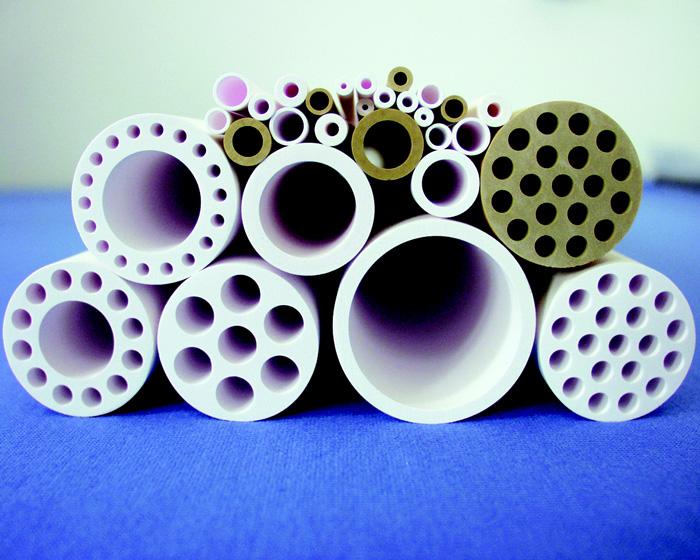Singapore has been relying on membrane technologies such as Reverse Osmosis (RO) for its newater and water reclamation needs. However, the use of ceramic membranes is gaining traction as an alternative for certain water and wastewater treatment applications.
What Are Singapore Ceramic Membrane ?
Ceramic membranes are filtration membranes made from inorganic materials such as alumina, titania, or zirconia. They are very durable and can withstand higher temperatures, pressures, and a wider range of pH levels compared to polymer membranes. The inorganic material renders them more resistant to fouling and challenges from chemicals and microbial growth. Ceramic membranes are most commonly used in microfiltration (MF) and ultrafiltration (UF) processes to separate particles and macromolecules from water.
Applications In Water Treatment
Several water reclamation plants in Singapore have started piloting ceramic MF and UF modules to treat used water prior to RO. Some key applications include:
Pre-treatment for RO: Ceramic membranes can function as an effective pre-treatment for RO systems used in water reclamation. Their superior fouling resistance allows reliable separation of suspended solids, bacteria, and natural organic matter from used water streams. This protects the RO membranes and improves flux.
Tertiary treatment: For water reuse applications that do not require such high purity levels, ceramic UF/MF modules can act as the final polishing step on their own after conventional secondary treatment. This produces a consistent permeate stream for non-potable reuse.
Industrial wastewater treatment: Industries such as food processing, oil refining and electronics manufacturing produce complex wastewaters that are difficult to treat using polymers. Ceramic membranes enable robust separation and recycling of water from these streams.
Advantages Over Polymer Membranes
While polymer membranes remain the workhorse for large-scale RO desalination and water treatment, ceramic alternatives offer clear advantages thanks to their superior mechanical strength and chemical resistance:
Higher durability: Ceramic membranes have significantly longer lifetimes than polymeric systems before requiring replacement. Some ceramic modules last over 10 years with minimal flux decline.
Wider chemical tolerance: They can withstand wider pH ranges from 2-12 and resist most common acids, alkalis and chemical oxidants used in cleaning. This makes them suitable for more challenging wastewaters.
Higher temperatures: Ceramic membranes retain high separation efficiency even at temperatures over 100°C. This allows direct integration with thermal processes.
Lower fouling: The slick, pore-free surface of ceramic membranes inhibits microbial attachment and foulant adhesion better than rougher polymer interfaces. This leads to more stable long-term fluxes.
Greater customization: The firing process allows precise control over pore size and surface properties. Membranes can be optimized according to application needs.
Challenges And Cost Comparisons
Despite intrinsic technical advantages, widespread adoption of ceramic membranes continues to be hampered by certain challenges:
Capital cost: Initial capital costs of ceramic modules are at least 2-4 times higher than comparable polyamide or PVDF systems. Economies of scale could help lower costs.
Manufacturing variability: Producing defect-free, uniform ceramic substrates and achieving tight quality control remains difficult for some smaller manufacturers.
System integration: Optimizing hydraulic configurations and module housing designs is more complex than standardized polymer modules.
Fragility during shipping: Barring durable metal casings, bare ceramic membranes are prone to damage during transportation if not handled properly.
However, the significantly longer lifespan and lower cost of ownership offsets the high initial capital outlay over the long run. For certain niche applications where process compatibility and uptime are critical, the total cost of treatment actually favors ceramic membranes. With further commercialization driving down unit costs, their use in industries and municipal facilities is likely to grow.
Ceramic membrane technology has progressed greatly in recent years and emerged as a reliable option for Singapore's water treatment infrastructure. While polymer membranes currently dominate large-scale installations, ceramics provide distinct advantages especially pre-treatment, industrial wastewater recycling, and thermal applications. With process optimization and manufacturing refinements continuing, they are poised to occupy an increasingly important role in the decades ahead.
Get more insights on this topic: https://www.zupyak.com/p/4232709/t/singapore-ceramic-membrane-singapore-leads-the-way-in-ceramic-membrane-technology
Author Bio:
Alice Mutum is a seasoned senior content editor at Coherent Market Insights, leveraging extensive expertise gained from her previous role as a content writer. With seven years in content development, Alice masterfully employs SEO best practices and cutting-edge digital marketing strategies to craft high-ranking, impactful content. As an editor, she meticulously ensures flawless grammar and punctuation, precise data accuracy, and perfect alignment with audience needs in every research report. Alice's dedication to excellence and her strategic approach to content make her an invaluable asset in the world of market insights. (LinkedIn: www.linkedin.com/in/alice-mutum-3b247b137 )

